
Traditionally, HR creates the talent strategy while senior management puts in place the business strategy. But must these two strategies be aligned? A resounding yes, if you ask research:
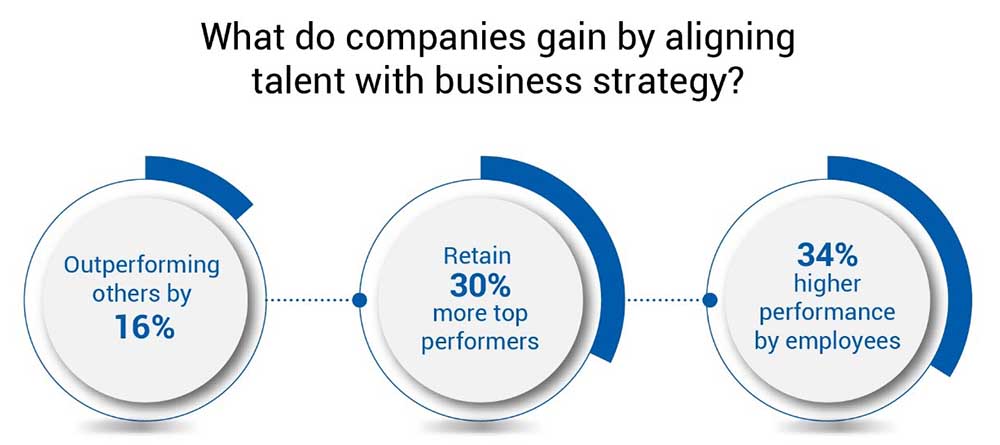
Given these facts, it is rather surprising that just 12 percent of organizations actually align their talent and business strategies.
Think back to childhood days, and the “Chinese whispers” game that many would have played. You sit or stand in a circle or line, and the first person whispers a phrase into the ear of the next person, who whispers the same to the next person, and so on till you reach the end of the line. The last person in the line announces the phrase to the group, whereupon it is invariably discovered that the phrase had changed considerably in passing through the group!
This is not unlike what often happens in organizations. Senior leaders create the business strategy, which trickles down many levels till it reaches the workers on the floor. Ask the latter what the business strategy is, and there is likely to be confusion and/or unclear answers. Clearly, talent management solutions are poorly aligned with business strategies here.
The pandemic has made this all the more critical to consider. The ways of work in global business are transforming rapidly, with business strategy and talent planning being put to the test. They are closely intertwined and cannot be considered separate from each other. Market dynamics mean talent must be nurtured with new skills critical for businesses across the world to succeed, and aligning it with dynamic business strategy and goals will be intrinsic to survival in the new normal.
Coined by McKinsey and Co way back in 1997, ‘talent management’ seeks to boost business value and help companies attain their goals by leveraging strategic human resource planning. Talent management strategy permeates the entire organization and focuses on helping and improving its talent. With its aim being the creation of a high-performance, sustainable organization that can meet its operational and strategic goals and objectives, it becomes a key component of overall business strategy.
Here are the elements of top talent management plans:
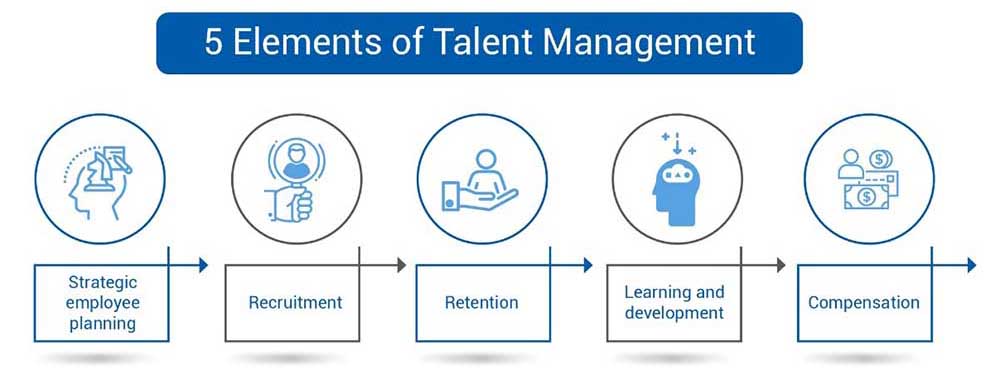
When the business strategy has been put in place, next must be a survey of skills required, to build a talent funnel. Following this, subject matter experts suggest the technologies that could boost revenues, and global talent management then matches these with the right skills to bring about the desired growth.
Getting the necessary skills requires three simultaneous approaches:
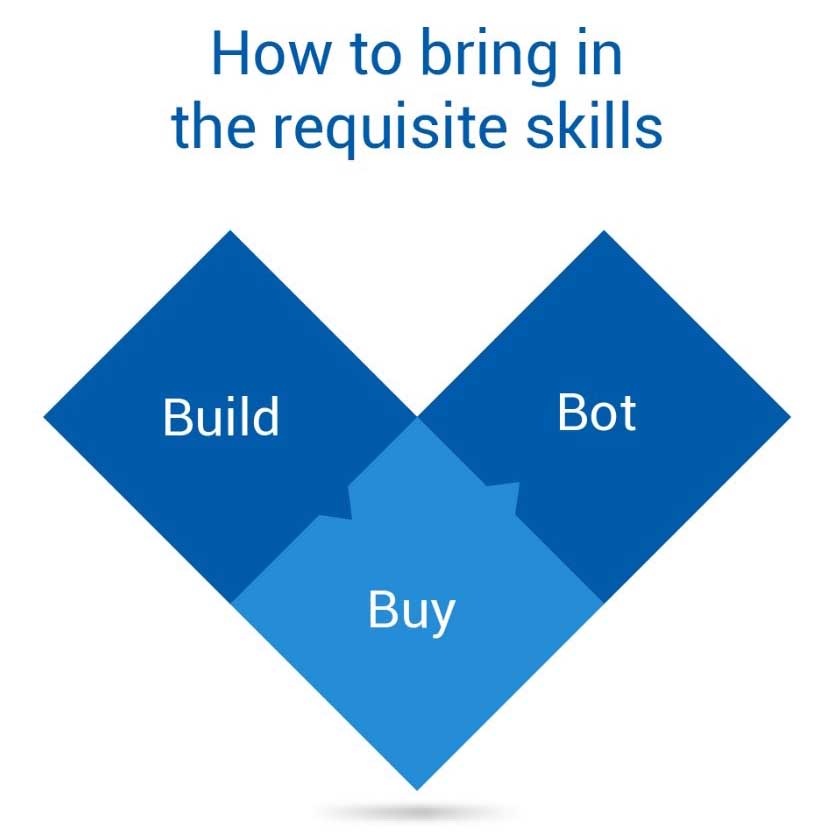
In the challenging global economy, talent management solutions are among the highest priorities for the leadership team. Many variables determine whether or not an organization will attain its strategic goals, and success in this endeavor requires people strategy teams and business leaders to work closely. Through a mix of qualitative and quantitative measures, they must attract, engage, and retain their workforce members.
The best workforce strategies must be built on these pillars:
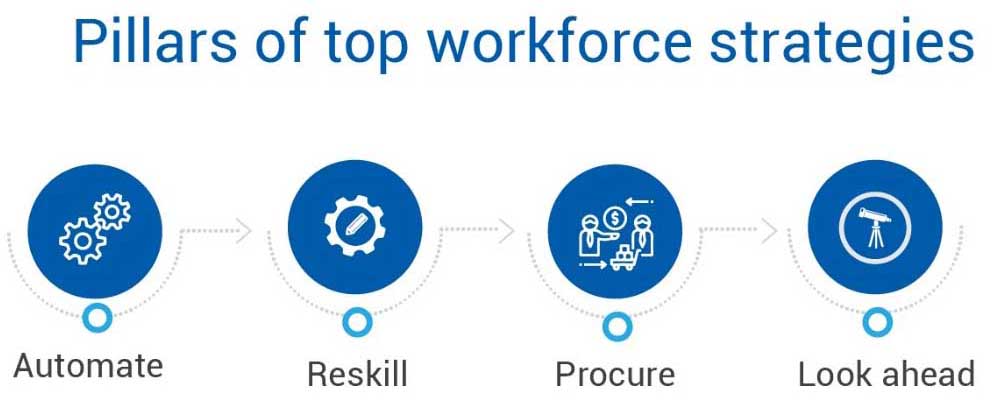
These pillars are what will align employees to business strategy. Success in the super-competitive business environment of today needs excellent customer service, innovation in operations and output, and quick speed-to-market. These can scarcely be attained without bringing employees on the same page with the culture, go-to-market strategy, value proposition, and vision of their employer. The goals of the alignment must therefore include:
Charting out a talent strategy that is in step with the business strategy is a tough ask, and requires a wide perspective. Studying technology trends could point to upskilling and reskilling requirements for the future. Talent needs must accordingly be identified across the business so that employees can offer what the customers seek. To achieve this, roles and skills should be mapped unambiguously to specific business outcomes. The best-of-breed talent also needs to be retained with a great compensation-and-benefits model commensurate with the skills it brings to the table. Finally, high-risk high-return investments as well as steady-state ones in the prudent mix would go a long way toward strategic success.
Begin the process of alignment by carefully studying operational and strategic goals and objectives. This analysis forms the base for leadership and HR to understanding the implications for talent plans and strategy. Once this interrelation is understood, it becomes simple to lay out specific talent initiatives and goals as well as to specify talent commitments and strategy.
The understanding is sorted, the need for alignment is clear, but how do you actually go about it? Here are the strategies to integrate for a purposeful alignment of business goals with the available talent:
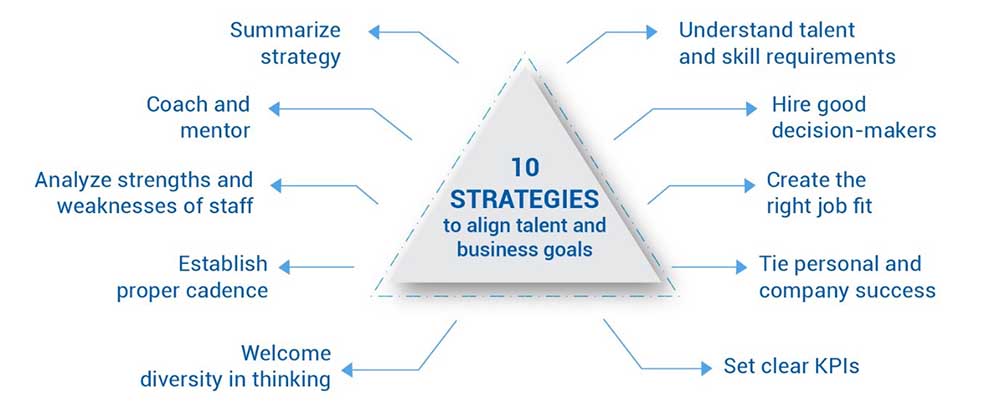
Labor costs make up 64 percent of corporate costs, though the same labor brings in 72 percent of value. Clearly, people are the enablers of corporate success, and aligning talent planning with business goals is the best approach for a company to follow. Achieve this synergy, and the sky is the limit!

CredBadge™ is a proprietary, secure, digital badging platform that provides for seamless authentication and verification of credentials across digital media worldwide.
CredBadge™ powered credentials ensure that professionals can showcase and verify their qualifications and credentials across all digital platforms, and at any time, across the planet.

Please enter the License Number/Unique Credential Code of the certificant. Results will be displayed if the person holds an active credential from TMI.